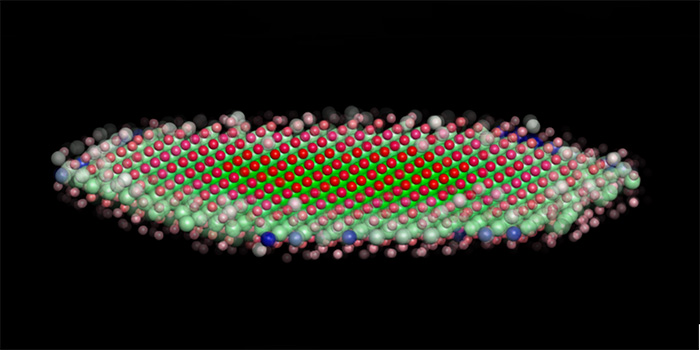VISION contributes to new groundbreaking method for visualization of atomic movements
A combination of experimental measurements and mathematical modelings has led to a new method that makes it possible to visualize atoms in movement. Professor and head of center Stig Helveg from the Center of Excellence VISION at DTU is part of the research team behind the method that has made it possible to identify individual atoms found in nanoparticles. The study has been published in the scientific journal Nature Communications.

It was previously thought that atoms in nanoparticles were static during observations, but an international research team’s combination of experimental measurements and mathematical modelings has now made it possible to refute this idea. Using 3D atomic-scale images, the researchers were able to identify the individual atoms even though they were moving because the new model is able to measure both the intensity and width of the atoms. Professor and head of center Stig Helveg, from the DNRF’s VISION at DTU, is last author on the study, which was recently published in the scientific journal Nature Communications.
“Until now, determining which atom we are observing has been challenging due to blurring caused by the oscillations of the atoms. However, by factoring in the oscillations, we can more accurately identify, for example, the location of individual sulphur or molybdenum atoms,” said Professor Helveg.
A basis for the upcoming work
Professor Helveg will use the new model and method as a basis for the upcoming research work at the Center of Excellence VISION, and he hopes other researchers within the field will make use of the model. The next step is to combine the atomic-resolved images with measurements of the catalytic properties of the nanoparticles and thereby measure the function. This step will move researchers toward work on another current and important topic: the development of nanoparticles for catalytic processes, which are part of the transition to sustainable energy.
The model was created through an international collaboration between Fu-Rong Chen from City University Hong Kong, Dirk van Dyck from the University of Antwerp, Christian Kisielowski and Bastian Barton from Lawrence Berkeley National Laboratory, Lars P. Hansen from Haldor Topsoe A/S, and Stig Helveg from DTU.
Read the scientific article in Nature Communications here
